Microsoft Dynamics vs Salesforce: What is the difference?
In the world of CRM, Microsoft Dynamics 365 and Salesforce are veritable superpowers.
The former is backed by one of the top 5 most valuable companies globally, and the latter owns a 1,070-foot office tower that helps define the skyline of San Francisco. Both vendors offer ‘legacy’ software products that have been built up over many years; the first version of Microsoft Dynamics was released back in 2001, while Salesforce got its start in 1999.
Today, Salesforce holds a commanding 19%+ share of the CRM market. Microsoft Dynamic 365 has a smaller market share, but definitely not insignificant—it’s between 3-4%, putting the company in fifth place among all CRM vendors overall.
Both CRM systems offer a comprehensive suite of work tools. Both have paid add-ons and flexible pricing plans so that users can customize the platform’s functionality for their distinct business needs.
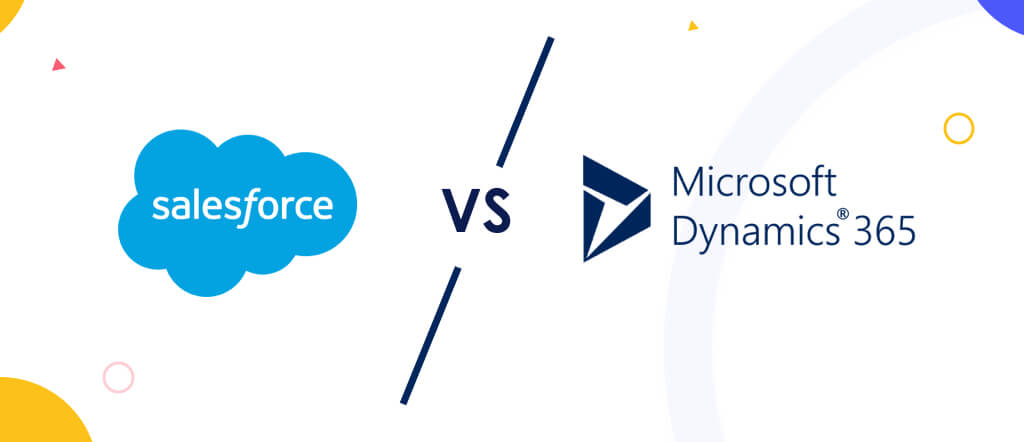
On the surface, they might look fairly similar.
With that in mind, how can you determine which of the two platforms is better suited for you? Read on to find out the differences between Microsoft Dynamics and Salesforce, as well as the pros and cons of each in this CRM software comparison.
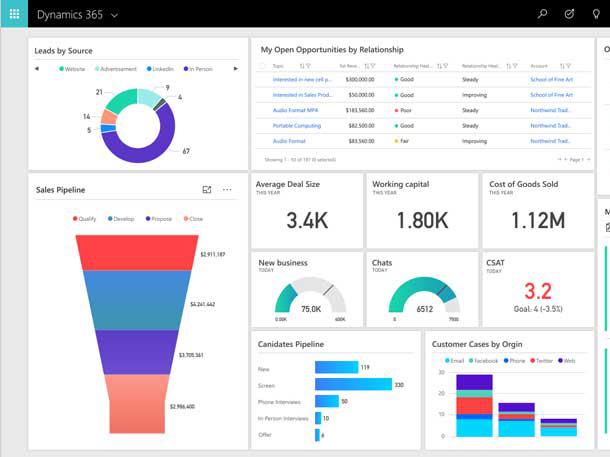
What is Microsoft Dynamics 365?
Microsoft Dynamics 365 is a comprehensive business suite of tools, built to handle pretty much every work process imaginable. It’s based on the Microsoft Azure cloud computing ecosystem (note: an on-premise solution is also available if you so choose).
The platform contains 11 core modules, or “apps,” including five of the CRM-type: sales, customer service, field service, project service automation, and marketing. The remaining six modules fall under the category of enterprise resource planning (ERP), talent (for HR), finance and operation, retail, mixed reality, business central (for SMBs), and artificial Intelligence (for sales, customer service, and market insight). For those in the market for a complete business package, here is likely some helpful overlap between the two types of modules.
All these modules integrate with virtually all the other products in the Microsoft ecosystem, furthering collaborative possibilities (for example, integration with OneNote and OneDrive allow you to share and work together on documents). Dynamics 365 products all provide general data production regulation (GDPR) compliance with top-tier security and data governance.
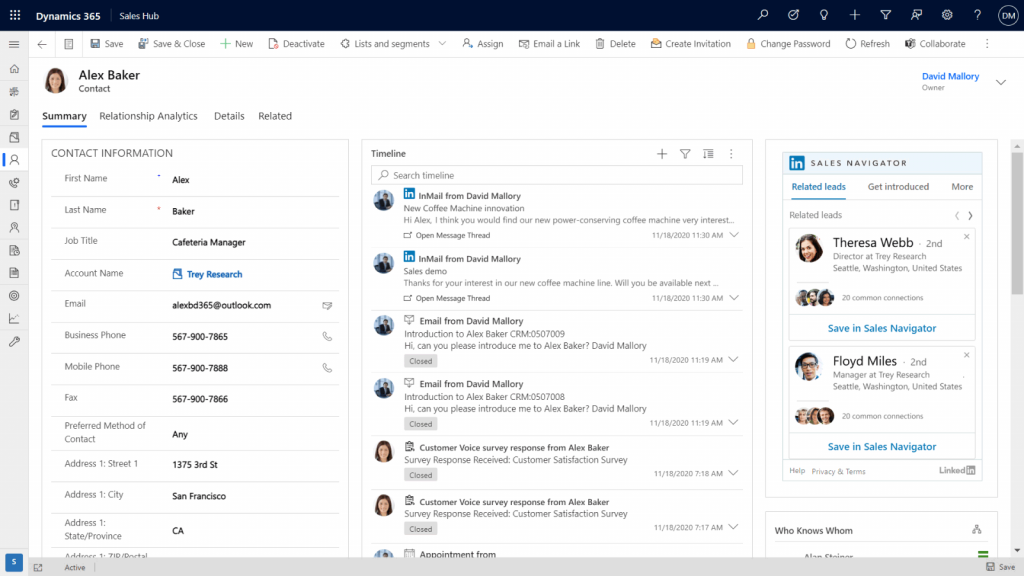
Features of Microsoft Dynamics 365
Use of applications
Microsoft Dynamics 365’s massive number of features are divided into modules. Within each, you’ll find several add-on ‘apps’ you can purchase individually to beef up functionality further in specific areas. The vendor offers discounts when you buy a certain mix-and-match combination of products.
Relevant search queries
Relevance Search syncs your data with Azure cloud’s search index. Keyword search is then fed into the Azure Search index, improving your ability to surface the most important search results. It’s toggled off by default, and once toggled on you can mindfully select only the non-sensitive data that you want to leave your system (Note: depending on the amount of data, sync can take up to an hour).
Optimized mobile platform
The developers behind Microsoft Dynamics 365 have put a lot of attention into building a mobile version defined by great user experience and ease of use. One time-saving feature is ‘favorites,’ which helps you get quick access to recently used records, dashboards, and project overviews. In addition to a mobile app for phones, the vendor also has an app specifically optimized for tablets.
Tool integration
The platform integrates with the full range of Microsoft products, including (but not limited to) Outlook and Office 365, Flow, and Power BI. Since Microsoft Dynamics uses a common data model, third-party integrations are pretty painless. You can download a huge range on Microsoft AppSource or use PowerApps or Microsoft Flow to develop in-house custom solutions with low code requirements.
Learning resources
There’s plenty of ways to learn the platform via Microsoft Learning. The vendor’s instructional materials include videos, as well as eLearning and in-person courses leading to role-based certifications. You can also download older Microsoft Dynamics 365 eLearning courses for self-study on the Dynamics Learning Portal.
Microsoft Dynamics 365 pricing
- Sales Professional plan is $50 per user/per month for a first-time user and $20 per user/per month if the user already has Dynamics 365 product(s), billed annually
- Sales Enterprise plan is $95 per user/per month for a first-time user and $20 per user/per month if the user already has Dynamics 365 product(s), billed annually
- Microsoft Relationship Sales (includes Sales Enterprise and LinkedIn Sales Navigator) is $130 per user/per month, billed annually (requires a 10 user minimum)
- Customer Service Professional plan is $50 per user/per month for a first-time user and $20 per user/per month if the user already has Dynamics 365 product(s)
- Customer Service Enterprise plan is $95 per user/per month for a first-time user and $20 per user/per month if the user already has Dynamics 365 product(s), billed annually
A 30-day free trial is available. Microsoft Dynamics 365 also includes a wide range of other paid add-on apps to mix-and-match for your business needs.
Pros & cons of Microsoft Dynamics 365
Pros of Microsoft Dynamics 365
Cost flexible
Microsoft Dynamics 365 has a flexible pricing structure that encourages initial adoption and incremental expansion of your usage. You pay a flat fee for your first module/app purchase, and then get a discount on subsequent apps. There is also the possibility of adding (and subtracting) additional apps as your business requirements change over time.
Seamless integration
Having the ability to instantly connect the platform to more-or-less every other tool in the Microsoft universe is super useful. You can find an incredible range of app integrations on AppSource (1,000+ at last count) or build a low-code custom solution with PowerApps.
Secure to use
Role-based, record-based, and field-level security options allow you to effectively control data access across your organization. Set permissions for collaborative projects so that only those who need access to data to do their job will have it. Data encryption comes standard, and administrators can self-manage database encryption keys with Azure Key Vault.
Business intelligence
Business Intelligence (BI) features help you simplify adoption of AI features with seamless interfaces, guidance, and integration with Microsoft Dynamics 365 modules. BI helps unify work processes, gain insights into customer relationships, and drill down through data to get usable information you can act on. It helps with everything from sales, marketing, and customer service to finance and fraud protection.
360-degree customer service
Unified tech infrastructure can address the entirety of the customer journey across time and across channels, making for a holistically improved customer experience. Microsoft Dynamics CRM empowers your team to deliver customer service and support with knowledge-driven case management, including dynamic guidance from data and report dashboards.
Cons of Microsoft Dynamics 365
Additional cost for data storage
Cloud storage costs may not seem like a big consideration at first, but they can add up. Every license comes with 10GB of cloud storage space, and you get 5GB extra when you reach 20 Enterprise-level users, but it’s pretty easy to exceed these limits. When you do, you’ll find there’s a significant additional storage cost of $9.95 per 1GB per month.
Requires training
With its abundance of features and all the potential mix-and-match, customizable implementation solutions available, Microsoft Dynamics 365 is not a platform you can just sign up for and get rolling with. As evidenced by the abundance of instructional resources on Microsoft Learn, there’s a significant learning curve. Becoming adept at the platform takes quite a few working hours, which should be considered.
Server code adjustments
Users cannot make server code adjustments, which inhibits your ability to customize your website. That said, there are some workarounds—you can do page content editing via Liquid and JavaScript templates and store your web portal configuration in Microsoft Dynamics 365.
Navigation
The platform is dense with layers of features, but the user interface doesn’t really make for intuitive navigation between them. Indeed, the overall look and feel of the platform feels dated and could use a refresh. This may well be one of the major factors preventing Microsoft Dynamics 365 from challenging Salesforce’s dominant market share (so far).
Price is higher
The basic cost of implementing Microsoft Dynamics 365 is higher than Salesforce. You’ll be dishing out at least $50 a month per user/per month to get started. This may be prohibitively expensive for some small businesses, or those looking for a first-time CRM solution.
What is Salesforce?
The most massive planet in the CRM solar system, Salesforce is a pioneer in CRM and other workplace SaaS services spanning analytics, customer service, marketing automation, and app development.
The vendor offers deep, well-developed tools for sales processes and team collaboration, as well as many third-party integrations. Sales managers and sales teams will be able to construct sophisticated tasks management systems. Advanced automation provides for a dramatic drop in the need for manual data entry, and takes tedious low-stakes decision making out of the everyday. Operations planning will benefit from centralized contact and sales information and having a “single source of truth” for data.
Salesforce CRM automates many tedious tasks and decision-making processes out of the workday. The platform also includes a Marketing Cloud module, which helps with everything from community engagement, marketing intelligence, customer sentiment, and more.
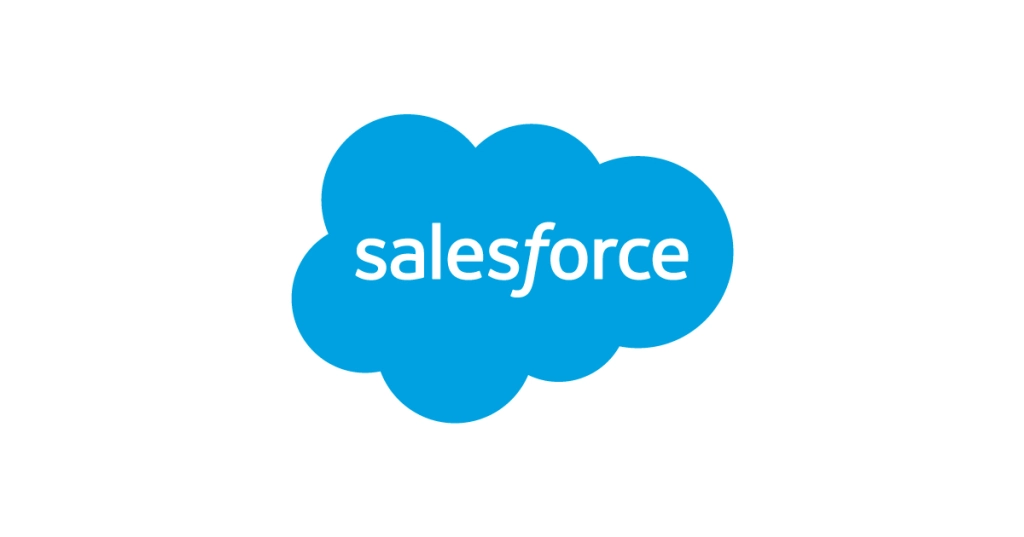
Features of Salesforce
Managing contact data
The Salesforce Sales Cloud provides robust contact management, complete with social media listening and tools for company-wide collaboration. You can also prepare for customer and client meetings on-the-go with the mobile app.
Quote tracking management
The platform offers Configure Price Quote software capability, allowing you to follow up on opportunities with quotes in short order. You can track which quote has been given to which customer, and also see which quotes have been offered to which customers, as well as the acceptance rate. This will allow you to calibrate the price point of your product or service offering, improving your overall sales pipeline.
Sales lead management
Convert leads to opportunities with a powerful activity timeline, and route and assign leads to the right team members. See which marketing campaign generated your lead, and track your campaigns across channels, including social media.
Mobile accessible
Salesforce offers excellent mobile CRM functionality. Track opportunities, converse with customers right away regardless of where you are. Gain access to all your data in real-time, and keep working from where you left off on your desktop.
Report management
A near-infinite amount of reporting configurations allow you to build, read, and share data effectively. Store, filter, and search for reports, and analyze report data with AI, including Einstein data insights. You can control data fields, report types, filter data by case type, and format your reports in a tabular, summary, matrix, or joined layouts.
Salesforce pricing
- Essentials plan for all-in-one sales and support is $25 per user/per month, billed annually
- Professional plan offering complete CRM for any size team is $75 per user/per month, billed annually
- Enterprise plan offering deeply customizable sales CRM for your business is $150 per user/per month, billed annually
- Unlimited plan for “unlimited CRM power and support” is $300 per user/per month, billed annually
A 14-day free trial is available for all plans.
Pros & cons of Salesforce

Pros of Salesforce
Customize
The Salesforce UI can be configured to set up new objects and fields, tabs, data verification requirements, and workflows without the need for a developer. If you require deeper customization of work processes, you can reach out to a Salesforce service provider. There’s also the Salesforce AppExchange, where thousands of free and paid third-party apps can be installed to extend the platform’s functionality further.
Cloud-based solution
Salesforce is a true SaaS CRM solution, with most public services running on Amazon Web Services (interestingly enough, Salesforce Marketing Cloud runs on Microsoft’s Azure). All your business data and processes are accessible to you across devices, with 99.9% uptime ensuring seamless usage.
Compatible
Regardless of whatever desktop browser you use, you’ll find Salesforce works well—there’s full support for Safari, Chrome, Internet Explorer, and Mozilla Firefox. Whether you’re a Mac or Windows user, Salesforce will simply work. Android and iOS compatibility ensures you’re covered on the mobile front as well.
Simple design
It has to be said that Salesforce has a well-designed UI, with a clean layout that makes a large number of features readily accessible and renders your information instantly comprehensible. This simple design helps greatly with the adoption rate, as more members on your team are likely to accept the platform.
Activity management
The Activity Timeline and Recent Activity Recap features allow you to keep tabs on important deals and gives you a heads up to revive those that may have stalled. Filter and find the most important activity and commit your company’s resources accordingly to close more deals.
Cons of Salesforce
Customization cost
While configuration tweaks are free, the implementation may require hiring a Salesforce Admin and paying them a monthly rate, while customizing Salesforce will require forking out cash for a developer. It’s important to note the potential hidden cost of building custom features that you’ve identified as crucial for business growth.
Complex technical support
Salesforce is an absolute behemoth of a company, and its scale appears to have had some negative repercussions on user support options. For one, support staff turnover appears to be an issue, and this makes it hard to build long-term, working relationships with specific support team members who know your company. The CRM’s help desk is also not always super responsive.
Complex for small business
Given the complexity of implementation and admin requirements, Salesforce may not be the best option for small businesses that don’t have a dedicated sales team. If you’re just looking for a basic CRM, there are many competitor platforms that are cheaper and easier to get up-and-running effectively.
Transformations
While transforming Salesforce with custom features may be a good idea for streamlining your workflow and boosting business growth, it will mean more upkeep in the future. Over time, as Salesforce updates to the platform are released, you’ll have to keep your custom-made tools up-to-date as well. This will, of course, take time and money.
Complicated reporting
Salesforce’s reporting tools are really powerful, and in the right hands, they allow you to share key information effectively and make important business decisions intelligently. However, the number of steps required to generate a report can be frustrating. The reports generated can also be complex to understand, which can slow down the process of acting on the opportunities identified via reporting.
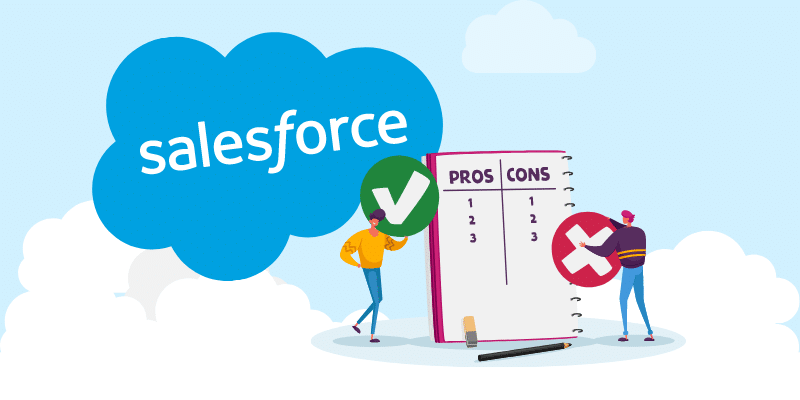
Conclusion
We can see that Salesforce and Microsoft Dynamics 365 are similar in many regards. Both software solutions offer expansive platforms full of tools that can holistically improve all of your business processes.
Dynamics 365 is more expensive to implement on a basic level, but this may be a moot point as you scale up, as the cost of using both Salesforce and Dynamics can easily increase to comparable levels depending on what add-ons and integrations you end up using. Salesforce is generally more user-friendly in the UI department, and more customizable, but Microsoft Dynamics 365 is probably a bit easier to use for reporting. Then again, if you really want or need an on-premise deployment, a Microsoft Dynamics 365 plan is the only way to go—Salesforce is cloud-based, full-stop.
Ultimately, the decision to pick either/or will come down to your very specific business needs.
Of course, choosing a customer relationship management platform for your business is an important step. Thankfully both Salesforce and Microsoft Dynamics 365 offer free trials.
Our advice? Comparison shop by trying out both before making a choice, and bear in mind the differences and the pros and cons listed above
For more info on Microsoft 365 visit – Seven IT Pro – Power Platform Experts
To book a free consultation for Microsoft 365 Suite related queries -Book a free consultation Meetings (office365.com)
Leave a Reply